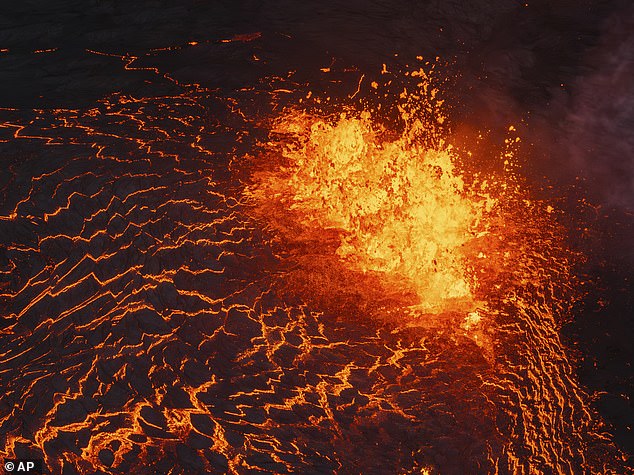A volcano in Iceland spewed smoke and lava for a second day on Thursday, but winds were expected to blow poisonous gas pollution away from the capital Reykjavik, officials said.
The eruption, the fifth since December, was the most powerful in the area since volcanic systems on the Reykjanes Peninsula became active three years ago after lying dormant for eight centuries, according to the Icelandic Meteorological Office.
The town of Grindavik, where only a few people have returned after several homes were destroyed by lava earlier this year, was again subject to an evacuation order, as was the nearby Blue Lagoon open-air spa, a important tourist attraction.
Volcanic activity decreased on Wednesday night, but remained stable overnight, the Civil Protection agency said in a statement.
There were no reports of injuries.
A volcano in Iceland spewed smoke and lava for a second day on Thursday
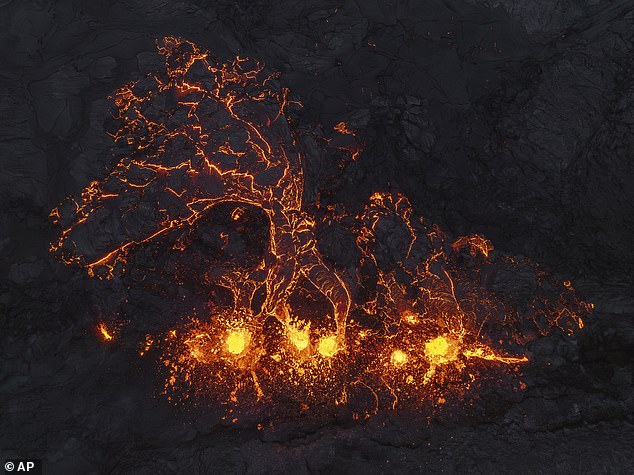
The winds were expected to blow poisonous gas pollution away from the capital, Reykjavik.
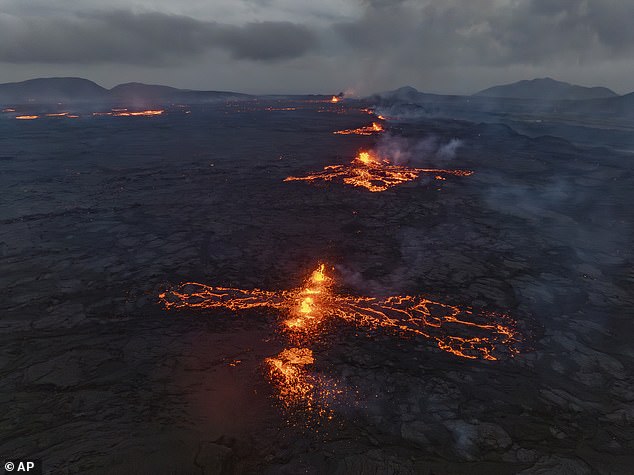
Sensors showed that air quality remains “very good” in the capital and its surroundings
“Westerly winds are expected today and gas pollution could spread eastwards over southern Iceland,” the agency said.
Sensors showed air quality remained “very good” in and around the capital, while a station closer to the eruption indicated it was “unhealthy for the sensitive.”
On Wednesday, lava flowed over the main road leading to Grindavik, and images released by local media on Thursday showed it was partially covered by a large mass of dry black rock.
Lava flows also reached dykes built around Grindavik, diverting molten rock westward around the city, according to the weather office.
Keflavik airport, Iceland’s largest, was operating normally.
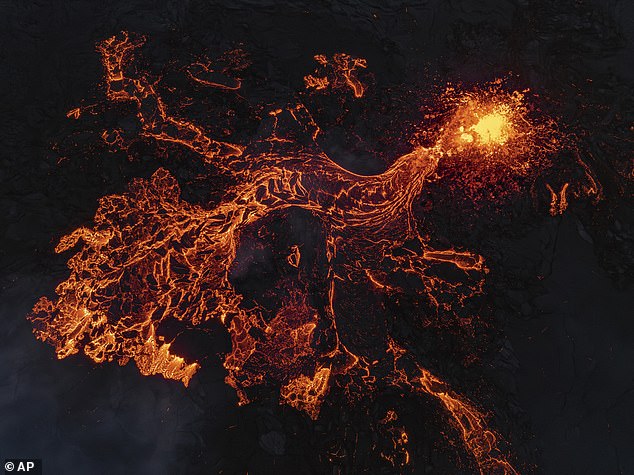
Lava flows reached the dykes built around Grindavik
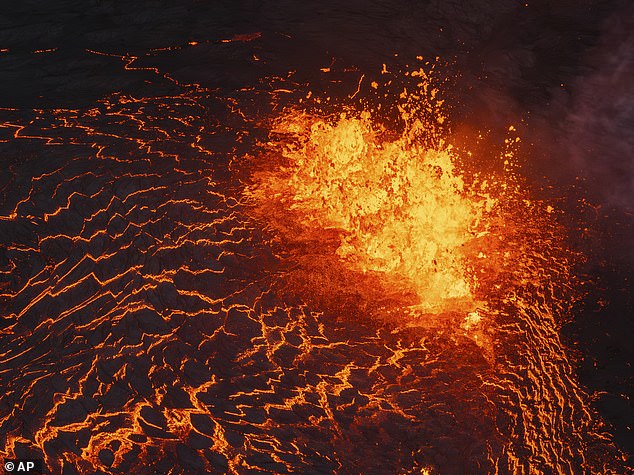
Grindavik, which is about 30 miles southwest of Iceland’s capital Reykjavik, has been under threat since a series of earthquakes in November forced an evacuation before the initial Dec. 18 eruption.
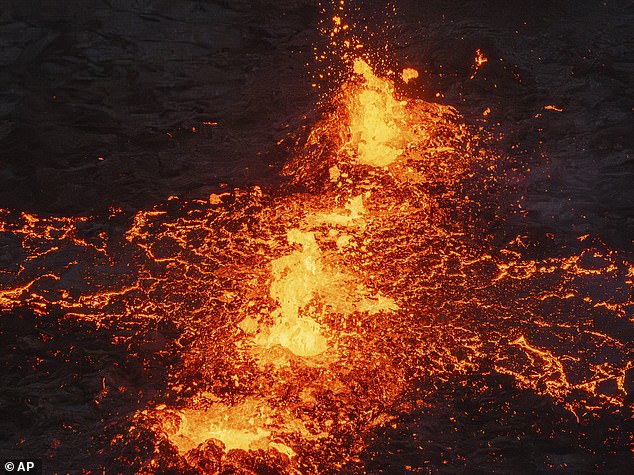
About 20 million cubic meters of magma had accumulated in the magma chamber beneath Svartsengi.
Yesterday’s images smoke against the blue sky as a thick fissure divides the landscape in two.
The Icelandic Meteorological Office (IMO) had reported “intense seismic activity” before Wednesday’s eruption, with “about 400 earthquakes” measured in the past seven days near the Sundhnuksgigar row of craters.
In addition, about 20 million cubic meters of magma have accumulated in the magma chamber beneath Svartsengi, where a power plant is located that supplies electricity and water to about 30,000 people on the peninsula.
The Svartsengi plant, since evacuated, has been operating remotely since the first eruption in the region in December, and barriers have been built to protect it.
Grindavik, which is about 30 miles southwest of Iceland’s capital Reykjavik, has been under threat since a series of earthquakes in November forced an evacuation before the initial Dec. 18 eruption.
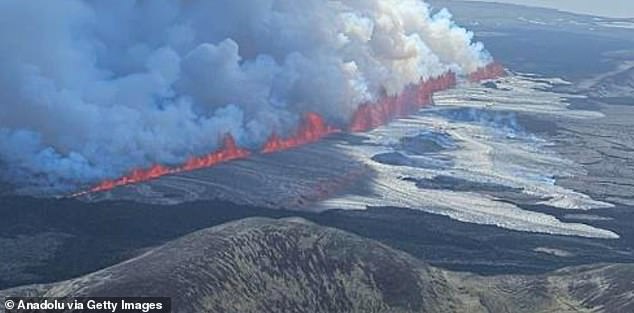
The Met Office said coast guard helicopters had been sent to determine the exact location and size of Wednesday’s eruption.
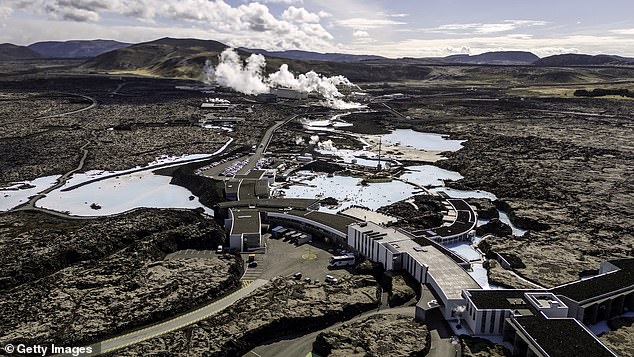
Most of the fishing town’s 4,000 residents were permanently evacuated in November, before the eruption.
A subsequent eruption tore down some defensive walls and consumed several buildings.
Most of the fishing town’s 4,000 residents were permanently evacuated in November, before the eruption.
Lava flowed into the streets of Grindavik during a subsequent eruption in January, engulfing three houses.
But some die-hard residents had returned to live in neighborhoods with less risk of lava flow.
The volcano erupted again in February and March, the first on February 8, covering a pipe, cutting off heat and hot water to thousands of people.
As of March 2021, the Reykjanes Peninsula, part of the Svartsengi volcanic system, had not experienced an eruption in eight centuries, as neighboring volcanoes remained dormant.
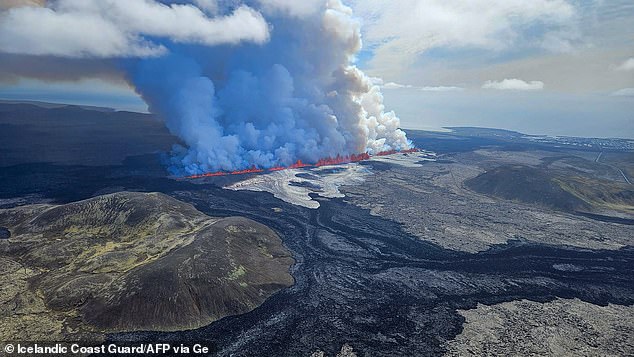
Images of yesterday’s smoke billowing against the blue sky as a thick fissure divides the landscape in two
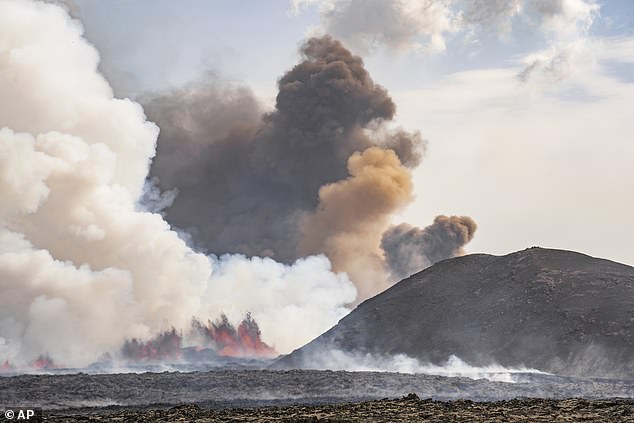
Iceland, which sits above a volcanic hot spot in the North Atlantic, is home to 33 active volcanic systems, the highest number in Europe.
Further eruptions occurred in August 2022 and in July and December 2023, leading volcanologists to believe that the start of a new era of seismic activity in the region had begun.
The Met Office said coast guard helicopters had been sent to determine the exact location and size of Wednesday’s eruption.
Iceland, which sits above a volcanic hot spot in the North Atlantic, is home to 33 active volcanic systems, the highest number in Europe.
It straddles the Mid-Atlantic Ridge, a crack in the ocean floor that separates the Eurasian and North American tectonic plates.
The most disruptive eruption in recent times was the eruption of the Eyjafjallajokull volcano in 2010, which spewed huge clouds of ash into the atmosphere and caused widespread airspace closures in Europe.

